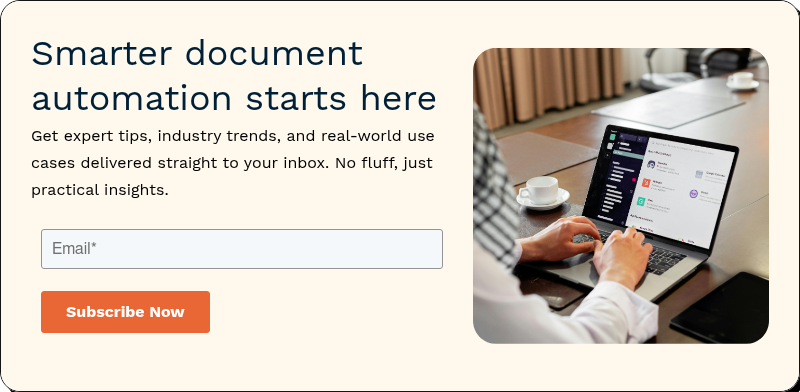How your business invoices clients directly affects your cash flow, client relationships, and overall operational success. As businesses grow and transactions increase, traditional invoicing methods can become a bottleneck, leading to delays, errors, and dissatisfaction. This is where invoice automation comes into play.
Why traditional invoicing methods fall short
Traditional invoicing methods often rely on manual processes, which can create challenges that slow down and reduce the accuracy of financial operations. Creating and sending invoices by hand is time-consuming, prone to human error, and often leads to inconsistencies that can confuse clients.
These inefficiencies can delay your payments, affecting cash flow and the ability to reinvest in the business.It’s clear that traditional invoicing methods no longer meet the needs of modern businesses.
What is invoice automation?
Invoice automation refers to the use of software and digital tools to manage the entire invoicing process, from creation to payment, without the need for manual intervention. This technology streamlines the invoice processing flow, allowing businesses to generate, send, and track invoices automatically.
Invoice automation systems are designed to integrate with existing financial and customer relationship management (CRM) systems, making sure that you create immaculate invoices that are accurate, consistent, and aligned with your business’s branding. These systems also provide real-time tracking and reporting, allowing you to monitor the status of invoices and payments more effectively.
Benefits of invoice automation
Implementing invoice automation offers several key advantages that can streamline your business operations and improve overall efficiency. Here are the primary benefits:
- Accelerating payment cycles: Speed up the invoice process, allowing you to generate and send invoices immediately after a service or product delivery, leading to quicker payments.
- Streamlined experience for clients: Make it easy for clients by providing clear, consistent, and professional invoices, enhancing their experience and satisfaction.
- Enhanced data security: Protect sensitive financial data and reduce the risk of breaches with automated systems that use encryption and secure communication channels.
- Branding opportunities through consistent invoices: Maintain a consistent and professional brand image by standardizing the appearance of all invoices with your company’s branding elements.
- Reduced errors and improved accuracy: Minimize human error by pulling data directly from integrated systems, ensuring invoices are accurate and free from common mistakes.
How to implement an invoice processing flow
Implementing an automated invoice processing flow from scratch can seem daunting. However, with the right approach, it can be seamlessly integrated into your existing operations. Here are some important aspects to consider:
Transitioning from manual to automated invoicing
Well-defined invoice processing steps help during the transition from manual to automated invoicing. These steps ensure a smooth and effective implementation:
- Conduct a thorough assessment: Begin by evaluating your current invoicing process to identify inefficiencies and areas that need improvement.
- Select an automation solution: Choose an invoice automation tool that aligns with your business needs and integrates seamlessly with your existing systems.
- Set up the software: Install and configure the chosen software, making sure that it is properly integrated with your financial and CRM systems.
- Migrate existing data: Transfer your current invoicing data into the new system for continuity and accuracy.
- Train your team: Provide comprehensive training to your staff on how to use the new automated invoicing system effectively.
- Test with sample transactions: Run a few test transactions to identify and resolve any issues before fully implementing the system across your business.
Integration with existing systems like Salesforce
Integrating invoice automation with existing systems, such as Salesforce, is necessary for a seamless transition. Salesforce, a popular CRM platform, allows for the easy generation and management of invoices directly within its ecosystem. This integration not only simplifies invoicing process steps but also enhances accuracy and efficiency across your operations.
Tools and solutions available for seamless adoption
There are numerous tools and solutions available to help businesses adopt invoice automation seamlessly. When selecting a tool, consider factors such as ease of use, compatibility with your existing systems, and the level of support provided by the vendor. Popular solutions like ones from S-Docs offer robust invoice automation features that can be tailored to meet your business’s specific needs.
Transform your invoicing process today
The benefits of automation extend beyond simply saving time; they also include reducing errors, increasing security, and creating opportunities for consistent branding. As you consider adopting invoice automation, explore the tools and solutions that best fit your business needs and start the transition today. With the right approach, you can streamline your invoicing process and unlock new potential for growth and success.
At S-Docs, we specialize in automating your invoicing process to help you streamline operations and create error-free invoices in moments. Discover how our powerful solutions can accelerate payment cycles, enhance client satisfaction, and integrate seamlessly with your existing systems. Request a demo today to experience firsthand how S-Docs can transform your invoicing process.




.png)


.png)
.png)
.png)